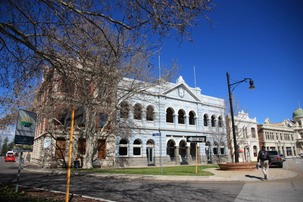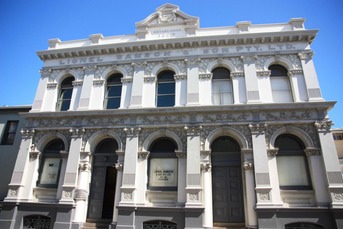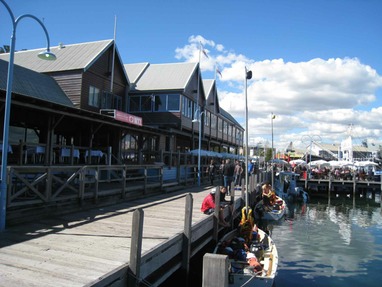 The area had presumably declined after former glories, along much the same lines that you’d expect to see in former warehouse and commercial precincts in port cities. OLver recent years there’s been the regulation inner-urban renewal, which in this case has been assisted by the establishment of the University of Notre Dame Australia, which has taken over many of the buildings in the West End.
The area had presumably declined after former glories, along much the same lines that you’d expect to see in former warehouse and commercial precincts in port cities. OLver recent years there’s been the regulation inner-urban renewal, which in this case has been assisted by the establishment of the University of Notre Dame Australia, which has taken over many of the buildings in the West End.
Our progress towards the fishing harbour was interrupted by frequent time outs for heavy duty snapping of historic buildings and as Madam’s shutter finger received a solid workout, I found myself distracted by the minutiae of the area. For a start, unlike most University campuses, the academic agencies are scattered through the neighbourhood, so there’s a mix of name plates as you walk around the streets. I noticed the Portuguese Consulate cheek by jowl with private homes and various academic departments and student-related affiliates. Interesting....
Lunch took the form of a serve of fish and chips (mine) and a seafood basket (Madam), both of which were substantial feeds. The seafood basket rendered Madam incapable of finishing her Stella Artois, so once I'd downed a Fat Yak I had to drain the dregs of the Fosters-brewed faux-Belgian ale. It also ruled out dinner as far as she was concerned, a minor factor that had some interesting consequences later that evening. We always intended to visit the Maritime Museum, and the Shipwreck Galleries annexe, so when we found ourselves outside the Shipwreck Galleries, we had to go in. We'd been advised that the Batavia display was worth a visit, and the gold coin donation was money well spent.

For anyone unfamiliar with the story, the Batavia, flagship of the Dutch East India Company, struck a reef in the Abrolhos Islands off the Western Australian coast after midnight on 4 June 1629 during its maiden voyage to Java and the mutiny and massacre among the survivors makes a chillingly bloodthirsty tale.
During the voyage, ship's captain Ariaen Jacobsz and junior merchant Jeronimus Cornelisz, a heretical bankrupt pharmacist fleeing the Netherlands, developed a plan to take the ship, using the gold and silver on board to start a new life somewhere.
Expedition commander Pelsaert, after an unsuccessful search for water, left the other survivors and headed to Batavia (Jakarta), a journey which took 33 days to complete in open boats.